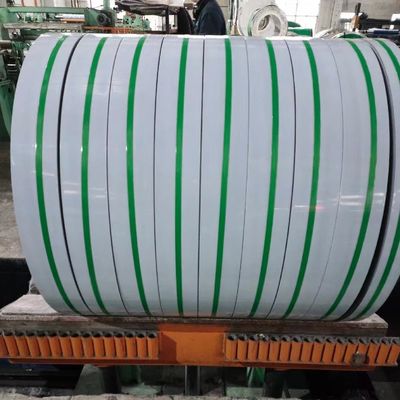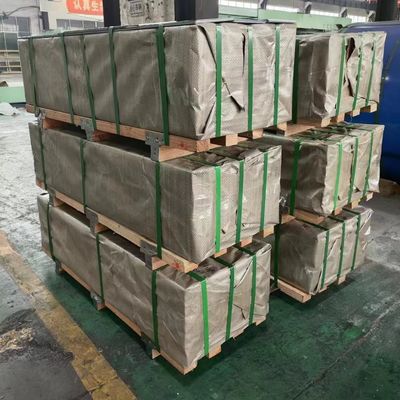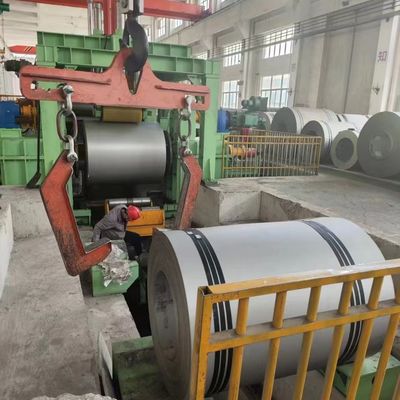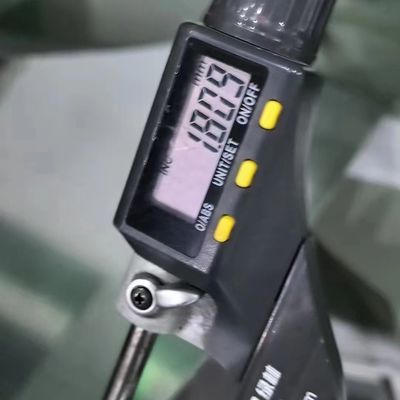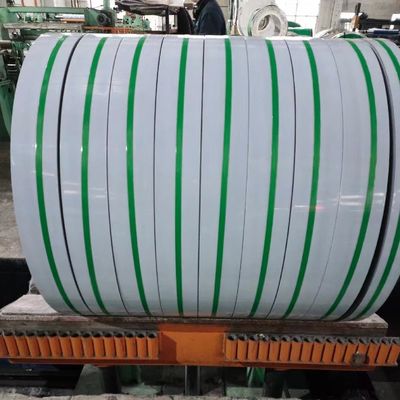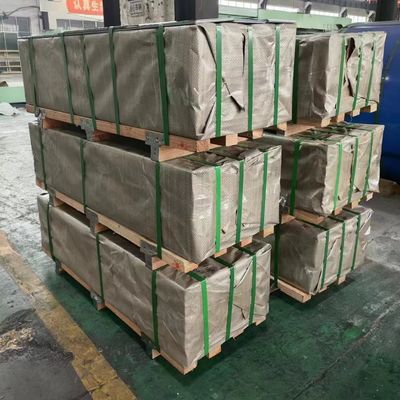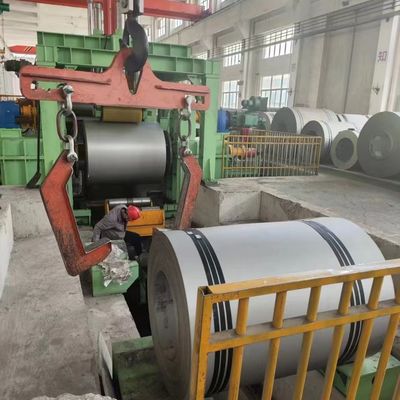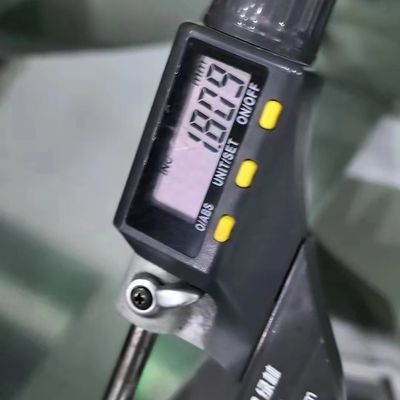-
 Raian IonescuMaterial quality very good. we have cooperate more than 10 Years. They trade lots kinds of steel material. All material quality good. They duty for all material quality. We are planing continue cooperate with them in the future
Raian IonescuMaterial quality very good. we have cooperate more than 10 Years. They trade lots kinds of steel material. All material quality good. They duty for all material quality. We are planing continue cooperate with them in the future
AISI416 Stainless Steel / UNS S41600 Stainless Steel Sheets 1000mm 1219mm 1500mm Width
| Place of Origin | China |
|---|---|
| Brand Name | TISCO |
| Certification | ISO |
| Model Number | 409L 410S 416 420 430 436L 439 441 443 444 |
| Minimum Order Quantity | 500 kgs |
| Price | 1330 - 1510 USD/Ton |
| Packaging Details | standard packing for export |
| Delivery Time | 5 - 12 days based on the quantity |
| Payment Terms | T/T, Western Union, L/C |
| Supply Ability | 10 Ton per week |

Contact me for free samples and coupons.
Whatsapp:0086 18588475571
Wechat: 0086 18588475571
Skype: sales10@aixton.com
If you have any concern, we provide 24-hour online help.
x| Products | Stainless Steel Sheet | Grade | 409L 410S 416 420 430 436L 439 441 443 444 |
|---|---|---|---|
| Standard | ASTM EN JIS GB | Size | 1219*2438mm |
| Thickness | 0.4 - 12.0mm | Type | Cold Rolled Hot Rolled |
| Service | Cutting, Surface Treatment | Application | Auto Exhaust Pipe |
| Packing | Wooden Pallets | ||
| Highlight | 1000mm Stainless Steel sheet,1500mm Stainless Steel sheet,S41600 Stainless Steel sheet |
||
AISI416 Stainless Steel / UNS S41600 Stainless Steel Sheets 1000mm 1219mm 1500mm Width
Products Specification
| Products Name | 400 Series Stainless Steel Sheet |
| Standard | ASTM EN JIS GB BIS |
| Thickness |
0.4mm 0.5mm 0.6mm 0.8mm 1.0mm 1.2mm 1.5mm 2.0mm 2.5mm 3.0mm 4.0mm 5.0mm 6.0mm 8.0mm 10.0mm 12.0mm |
| Surface | 2B 2D NO.1 or process other surface as request |
| Standard Size | 1219*2438mm 1000*2000mm |
| Service | Slit Cutting, bending , surface treatment |
| Other Grade | 200 Series: 201 202 |
| 300 Series: 301 304 304L 309S 310S 316L 316Ti 317l 321 329 347 | |
| 400 Series: 409L 410S 416 420 431 436L 439 441 443 444 446 | |
| Special Grade: 254SMO 904L 2205 2507 253MA Nickel Alloy | |
| MOQ | 500 kgs |
| Packing | Wooden Pallets and waterproof paper |
Size Range of our 416 Stainless Steel Sheet & Plate
| Type | Thickness | Standard Size | Service |
| 416 Stainless Steel Sheets | 0.4mm 0.5mm 0.6mm 0.8mm 1.0mm 1.2mm 1.5mm 2.0mm 2.5mm 3.0mm | 1000*2000mm 1219*2438mm | Cutting, surface finishing |
| 416 Stainless Steel Plates | 4.0mm 5.0mm 6.0mm 8.0mm 10.0mm 12.0mm or other thickness as request | 1500*6000mm | Cutting, surface finishing |
What is 416 Steel?
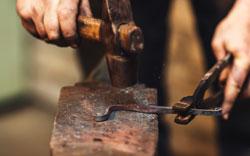 Stainless steel grades are preferred by many as blade steel since they’re very easy to maintain. However, not all varieties are ideal for making knives. Others are more suitable for use as fitting materials.
Stainless steel grades are preferred by many as blade steel since they’re very easy to maintain. However, not all varieties are ideal for making knives. Others are more suitable for use as fitting materials.
One good example for this is the 416 steel. While popular among knifemakers, the 416 is not a top choice for making blades. It still has several appealing attributes that make it a good metal of choice for other applications, though.
What is 416 Steel?
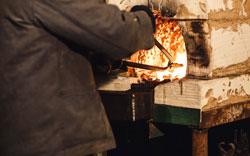 Characterized as a martensitic, free-machining stainless steel, the 416 steel is said to be a more machinable version of the 410 stainless steel. It’s considered to be first free-machining stainless steel and with a machinability of 85%, it’s also deemed to be the most machinable stainless steel.
Characterized as a martensitic, free-machining stainless steel, the 416 steel is said to be a more machinable version of the 410 stainless steel. It’s considered to be first free-machining stainless steel and with a machinability of 85%, it’s also deemed to be the most machinable stainless steel.
Like other steel grades, it can be heat treated to achieve a higher hardness level. It’s meant to allow fast machining that still results with a good surface finish and low tool wear.
The 416 steel is always magnetic and has non-galling characteristics. It also allows faster feeds and speeds that help lengthen the lifespan of cutting tools.
Common Application of 416 Steel
The 416 stainless steel is primarily used for the following applications:
- Pumps
- Valves
- Gears
- Studs
- Nuts and bolts
- Electrical motors
- Automatic screw machine parts
- Washing machine components
- Motor shafts
- Housings
- Cutlery
416 Steel Chemical Composition
As a martensitic stainless steel, a number of components can be naturally found in its blend. The most essential would most probably be chromium.
- Carbon, 0.15% max
- Manganese, 1.20% max
- Phosphorus, 0.060% max
- Sulfur, 0.150% min
- Silicon, 1.00% max
- Chromium, 12.00 – 14.00%
Carbon, 0.15% max: An essential part of most steel grades, the 416 doesn’t have a lot of carbon but it already adds a good dose of strength and toughness to the composition of this metal. Despite having low carbon content, however, this steel is not recommended for uses that involve welding.
Manganese, 1.20% max: Primarily a deoxidizer that helps remove sulfur and oxygen from the mix to create a sound structure, manganese is also added to the 416 steel to reduce its brittleness and enhance strength.
Phosphorus, 0.060% max: One of the components that make the 416 highly machinable is its phosphorus content. It may not be a lot but it contributes a good dose to the said attribute. It also helps strengthen low-carbon steels which is exactly what the 416 is.
Sulfur, 0.150% min: The 416’s high sulfur content is the very reason why it’s classified as a free-machining stainless steel. This makes it very easy to cut and machine. On the flip side, it also causes some brittleness and makes the steel unsuitable for welding applications.
Silicon, 1.00% max: Normally used as a deoxidizer to enhance the quality of the steel, the 416 contains a higher amount than what’s usually used for such purposes. Because of this, strength is improved in the steel.
Chromium, 12.00 – 14.00%: With a relatively high amount of chromium, the 416 is classified as a stainless steel. This means that it’s not prone to rusting and corrosion. However, the high levels of silicon tend to reduce the corrosion resistance of this steel.
Other sources also include 8.0 – 10.5% nickel, and up to 0.6% molybdenum for the 416. Nickel improves toughness and hardenability while molybdenum increases corrosion resistance as well as the toughness, strength, and hardenability of steel.
416 Steel Hardness
As mentioned above, this stainless steel can be heat treated to harden but in most cases, it doesn’t get very hard to be used in functional knives. It’s actually only rated at B82 which is below the minimum HRc ratings.
Some say that it’s still possible to temper the 416 steel to make it harder but experts say that the difference is not significant enough to be noticeable.
Does 416 Steel Rust?
As a stainless steel, the 416 steel is less susceptible to rusting and corrosion. However, it’s said that due to its high sulfur content, this steel grade tends to offer lower corrosion resistance than other stainless steels with little to no sulfur content.
Properties of 416 Steel
 Its list of components may have already mentioned a number of its attributes but here’s a more detailed discussion of the many properties of the 416 steel.
Its list of components may have already mentioned a number of its attributes but here’s a more detailed discussion of the many properties of the 416 steel.
Machinability
The top feature of the 416 steel is its machinability. This refers to a metal’s attribute that makes it easy to cut or ‘machine’ that will also allow some materials to be removed with a good finish without costing a lot. As mentioned above, this particular steel grade is the most machinable stainless steel so it can be said that its machinability is outstanding.
Corrosion resistance
As a stainless steel, it can be expected that the 416 steel has a good dose of corrosion resistance. It wouldn’t develop a patina or get rusty very easily since it has high chromium content.
However, the effectiveness of the 416’s corrosion resistance is still said to be lower than other steels with the same amount of chromium in them. This is because it also has a high amount of sulfur. It can still handle exposure to wet and humid conditions without getting easily damaged.
Toughness
Despite not having high hardness levels, the 416 steel still has ample strength and toughness to be suitable for a wide range of uses. It may not necessarily be widely used as a blade steel but it’s still capable of delivering good results when used as a fitting material.
416 Equivalent Steels or Alternative
 To complete this 416 steel review, it would be prudent to compare this steel grade to other options that are more familiar to the general public. Check out the roundup below to see how the 416 fares against other kinds of steel.
To complete this 416 steel review, it would be prudent to compare this steel grade to other options that are more familiar to the general public. Check out the roundup below to see how the 416 fares against other kinds of steel.
416 Steel vs 316
As the second most popular stainless steel grade in the world, the 316 steel is definitely something a lot of people are very familiar with. It’s noted for its high corrosion resistance, thanks to its high chromium and molybdenum content.
What makes this steel notable is the fact that it’s not just resistant to corrosion but it can also handle chloride. It’s recommended for marine applications as well which is a very good testament to its corrosion resistance.
However, like the 416, it can’t be hardened to high levels to make it usable for knifemaking.
416 Steel vs 304
The 304 is the most common stainless steel available today so there’s a very good chance that everyone has already come across this steel in one form or another. It’s best known for its high chromium and nickel content.
Its low carbon levels, however, makes it a mild steel. This means that it cannot harden to high levels, so it’s not suitable for knife making. It won’t have the functionality that one will require from a good blade steel.
Compared to the 416 steel, however, it’s more resistant to corrosion. It
416 Steel vs 410
The 410 steel is classified as a general-purpose steel with a good balance of hardness, toughness, and corrosion resistance. It’s commonly used in manufacturing kitchen utensils and is already a good choice for making hardy knives.
Despite being a suitable choice for knives, however, the 410 is still not a very hard steel grade. This is why it’s mostly used for cutlery and not for hard use knives.
Compared to the 416, it’s less machinable so it has its limitations. But it’s the tradeoff necessary to be usable as a blade steel so everything just works out.
![]()
![]()
![]()
![]()



